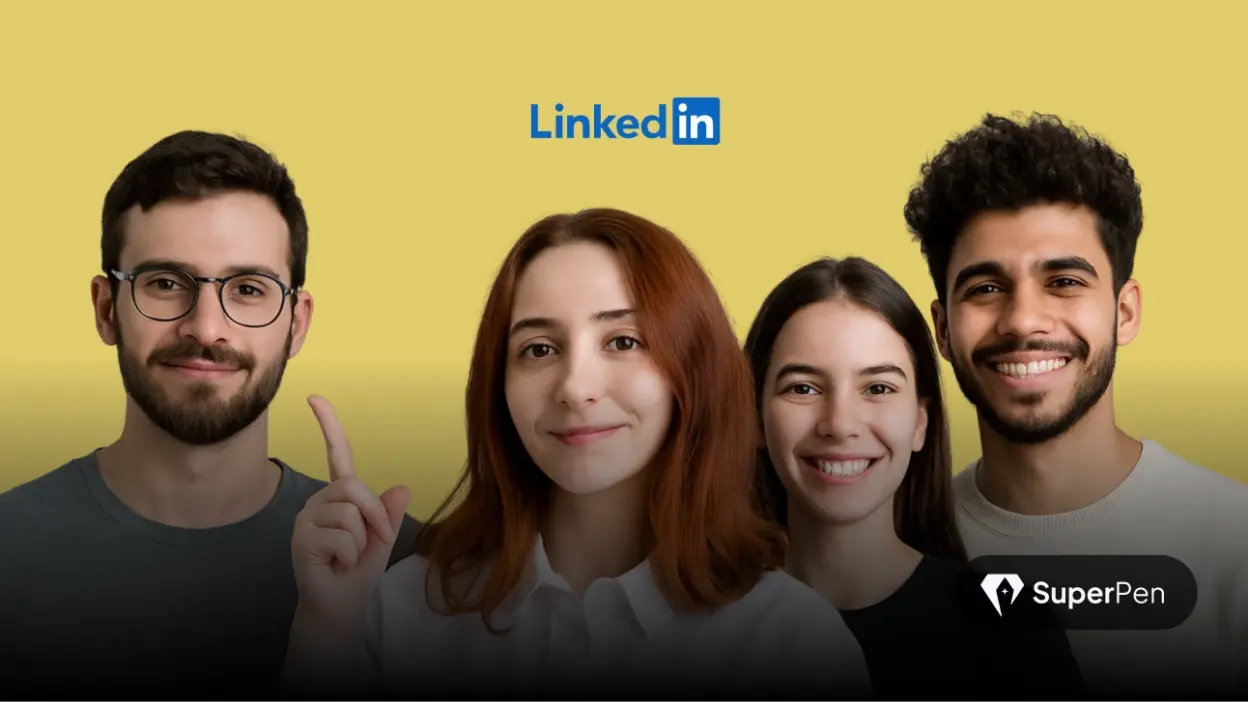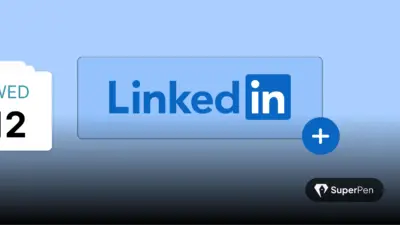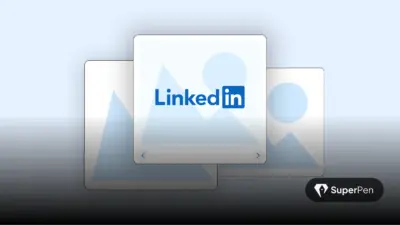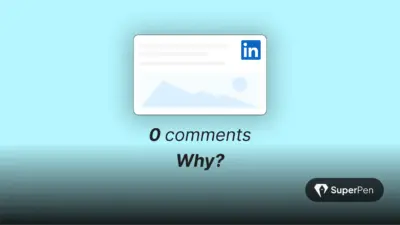You’ve built something meaningful.
Now here’s the question:
Is LinkedIn just a digital resume for your startup…
or the most underrated growth channel you’re not using enough?
Because for founders, it’s not just about posting wins.
It’s about building leverage.
Used strategically, LinkedIn for founders is where silent momentum begins—
You tell your story.
You attract talent.
You earn trust before you ask for anything.
In this guide, we’re not tossing generic tips your way.
We’re showing you how to use LinkedIn for founders –
to get noticed by investors, land media, and recruit game-changing hires.
You’ll get the 3‑2‑1 content formula founders swear by,
real post examples that don’t sound like pitch decks,
and honest insights on what works (and what flops).
Let’s get into it.
Table of Contents
LinkedIn for Startups
Why It’s Still a Startup Power Tool
The platform may be integrating short-form videos, memes, and quizzes –
but LinkedIn for founders still reigns as the #1 stage for professional storytelling.
It gives you access to a billion professionals – future hires, investors, advocates, and media contacts.
It’s where behind-the-scenes founder stories humanize your mission and attract the right kind of attention.
If you’re building in public, this is where you make it count.
Profile = Your Professional HQ
Your profile spotlight must instantly tell your story, mission, and impact.
- Photo & Banner that resonate. Use a photo that’s friendly yet professional. Banners should reflect your startup’s mission – photos of your team, product, or workspace work best. Here are some examples:



- Headline with problem focus. Replace “CEO @ XYZ” with “Building [X] to solve [big problem]”.
- About section: 3 paragraphs.
- Your journey & lived experience.
- Why this mission matters.
- What people get – content themes you’ll cover and value you share.
- Your journey & lived experience.
🤝 Connect Authentically, Not Pitchily
Here’s the truth: nobody likes cold DMs that feel like a copy-paste job.
If you’re reaching out as a founder, ditch the “Let me know if you’re open to a quick call” energy. You’re not just networking – you’re starting a real conversation.
- Customize every message. Mention something specific from their profile, a post they made, or a project they’re part of.
- Engage first. Drop a thoughtful comment or question before sliding into their inbox.
- Lead with curiosity, not a pitch. Instead of “Can you help me?”, try “Would love your take on…” It changes everything.
Here are 3 plug-and-play templates that feel personal, not salesy:
Template 1: The Thoughtful Commenter
“Hey [Name], I saw your post on [Topic] and it really hit home. We’re tackling something similar over at [Startup Name – curious how you approached [specific challenge]. Would love to stay connected.”
Template 2: The Shared Mission
“Hi [Name], I came across your work via [community/event/post], and it’s clear we’re both chasing similar goals around [mission or industry]. Always keen to learn from people building with purpose-looking forward to following your journey.”
Template 3: The Ask (That Isn’t Pushy)
“Hey [Name], I’ve been digging into your content on [Topic]-gold. I’m exploring something in the same space and would love your perspective on [brief, specific question]. No pressure at all, but figured I’d reach out.”
Keep it light. Keep it real. You’re not selling-you’re starting relationships that compound over time.
Founder Brand
Your personal brand = what people associate with your name.
It should align with your startup – but feel human, original, and unmistakably you.
LinkedIn for founders isn’t just about business updates.
It’s where your name becomes a signal – of vision, clarity, and credibility.
Discover Your Unique POV
Forget generic advice. Find your sweet spot where:
- Your lived experience
- Your career expertise
- Your niche audience needs
That’s where your voice thrives .
EXAMPLE: If you built a marketplace, share actionable lessons about scaling supply, tactics for fair negotiation, and ways to empower underserved sellers-through your lens.
Try the 3‑2‑1 Posting Formula
Startups love frameworks. This one works:
- 3 value-first posts (how-tos, cheat-sheets)
- 2 human stories (failures, team wins)
- 1 business update (launch, milestone, ask)
It balances generosity, relatability, and celebration without slipping into a sales pitch.
Go Multi-Channel (Without Spreading Thin)
LinkedIn isn’t your only touchpoint:
- Long-form articles on Pulse for deeper dives.
- Newsletter snippets to grow your subscriber base.
- Podcasts or panels, then share highlights.
- Short videos (2–5 minutes), human and practical.
Repurpose content across formats to ease effort and amplify reach.
Your Pillars of Expertise
Break your content into three areas:
- Industry trends – data, shifts, forecasts.
- Product/problem angle – lessons learned, tools used.
- Organizational values – how culture shapes decisions.
This balanced mix positions you as a credible voice-with substance behind every post.
Spark Engagement (Not Just Monologue)
- End posts with a question (“How would you approach this?”)
- Tag mentors, early adopters, collaborators.
- Share frameworks or tools (templates, GPT prompts).
- Always respond to comments-invite deeper discussion.
Fostering two-way community over static feeds builds trust and visibility.
Look at the Right Metrics
Don’t chase vanity metrics. Instead, track:
- Engagement rates
- Profile views & inbound messages
- Talent outreach & media mentions
- Pipeline impact (via “how did you find us?” in forms)
This way, your LinkedIn time becomes measurable business value, not just noise.
Attract Talent, Partners & Press Without the Sleaze
Talent
- Show your culture. Using short BTS posts, team highlights, and early-room problem-solving attracts humans-not job seekers.
- Share your hiring vision. “We’re hiring a product lead who values autonomy-ping me” feels inviting vs. cold job ad.
Avoiding Salesiness
- Use questions, not calls-to-action. Ask, “Would this work for your org?” not, “Call me.”
- Share before selling. Give away expertise first.
- Be transparent: “This is new, and it doesn’t yet scale-but here’s why it matters.”
Commenting-The Underground Growth Hack
You don’t need to post daily. Comments are underleveraged.
- Comment thoughtfully on influencers’ and peers’ posts.
- Make your voice visible in high-engagement threads.
- “Liked X’s take-here’s how we handled it at Y” shows leadership without grandstanding.
Common Pitfalls (and How to Dodge Them)
| Mistake | Why It Hurts | How to Avoid |
| Over-promotion | Causes fatigue & blocks audience | Stick to 3‑2‑1 cadence |
| Generic ‘top 5’ posts | No value, no attention | Always add personal insight or data |
| Ghostwritten voice | Inauthenticity stands out | Use your natural language-even typos |
| Inconsistent posting | You vanish from feeds | Batch-create content & schedule it |
Getting Started: Your 30-Day Playbook
- Audit your profile by disguise-checking: Would a recruiter or journalist trust it?
- Define your 3 core themes: e.g., “platform scale”, “remote leadership”, “AI ethics.”
- Plan your 3‑2‑1 schedule for the month.
- Write & batch posts: 3 value posts, 2 human stories, 1 milestone.
- Pick 3–5 thought leaders to follow & comment weekly.
- Publish long-form (1,200 words) or video once/month.
- Track metrics and adjust your schedule based on what resonates.
Conclusion
LinkedIn isn’t just a place for founders to pitch — it’s your platform to build trust in public.
It’s where your journey, values, and insights can spark real conversations with the people who matter: future hires, collaborators, investors, and press.
That’s the magic of LinkedIn for founders: showing up with substance, not spin.
Start with a profile that actually reflects who you are. Then post with purpose (try the 3‑2‑1 flow), show up in the comments, and mix formats that fit your voice.
Most importantly? Track what’s working so you’re not just posting into the void.
And if you want help turning your ideas into high-performing content—without spending hours writing from scratch – SuperPen has your back.
FAQs
1. How often should I post?
Once a week is the minimum; 3‑2‑1 gives you 6 posts monthly with impact and space to engage.
2. What formats drive the most attention?
Short text posts + 2‑5 min videos, Pulse articles, and threaded announcements.
3. Should I invest in LinkedIn ads?
Not initially. Focus on organic influence and equity in comments. Consider Thought Leader Ads later.
4. How to manage negative comments?
Acknowledge, invite dialogue. “Appreciate your take-here’s our reality…” diffuses tension and builds trust.
5. How to track ROI?
Use profile analytics, inbound connections, referral code in forms (“found you on LinkedIn”), and reach in media mentions.





